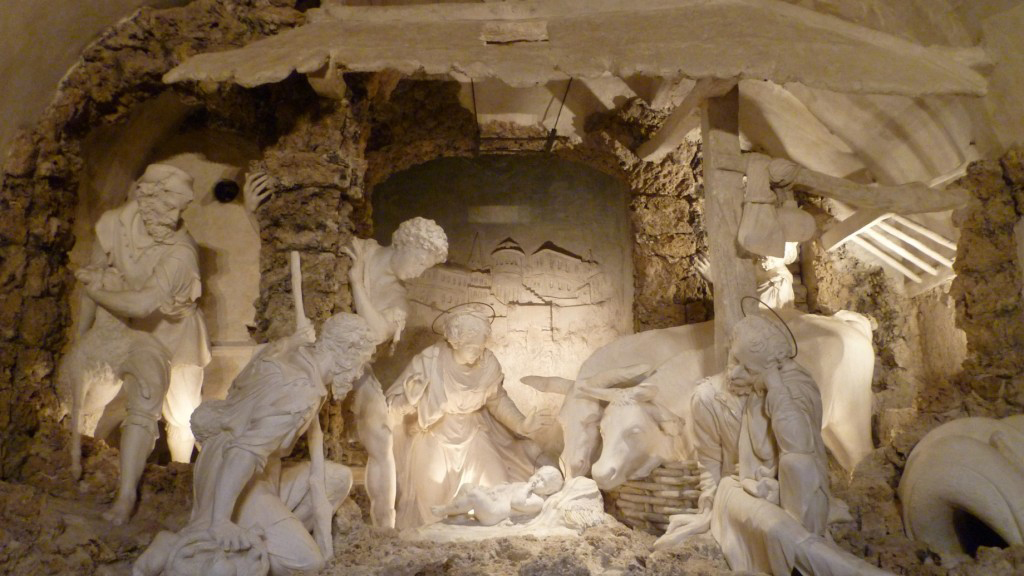
St. Joseph Confraternity dates back to the early 1500 thanks to the Franciscan Father Girolamo Recalchi from Verona. Granted by Duke Guidubaldo and Duchess Elisabetta Gonzaga, the building was begun in 1503 and completed in 1515, also with the permission of Bishop Giampietro Arrivabene.
The Oratory was then rebuilt between 1682 and 1689 thanks to Orazio Albani. it suffered heavy damage from high humidity level, compromising the altar, which was then moved to the place of the original entry. The Confraternity joined that of S. John Decollato in Rome in that period.
The members of the Albani family, famous artists and famous people, were particularly attached to that Confraternity, among these we remember Pope Clement XI and the Cardinal Annibale, who gave precious gifts that still enrich the Oratory. On the right you enter the chapel of the Nativity by Brandani (1545-50).
In the representation, in a simple hut, the Virgin participates to the adoration of the shepherds, showing her amazement through the movement of her hands, while the ox and the donkey, masterfully molded, heat up baby Jesus. Sitting apart in the background, with plastic naturalness, there is St. Joseph in deep thought. Above the door of the chapel there is a bas-relief by the Tuscan Domenico Rosselli depicting the Madonna and Child.
The church has a single hall . The walls, the vault and the apse were decorated by Carlo Roncalli, also author of four paintings depicting scenes related to the life of the owner Santo: the Birth of the Redeemer , the Marriage, the Flight to Egypt, and Transit. Even the main altar, consecrated in 1729, made of precious marbles, is a gift of Cardinal Annibale Albani. In 1723 the cardinal himself sent to Rome the shrine with porphyry columns and a huge statue of St. Joseph, carved in white marble by Giuseppe Como Lironi, as well as the monumental organ (by Sebastiano Vici) of 1782, used frequently to high concerts.
On the right Madonna and Child painted by Maurizio Sparagnini. In the sacristy you can admire a painted wooden cabinet with landscape views by Alessio De Marchis, a splendid example of local furniture.



